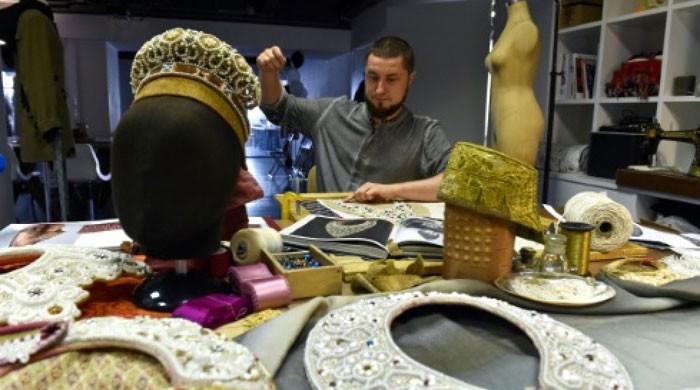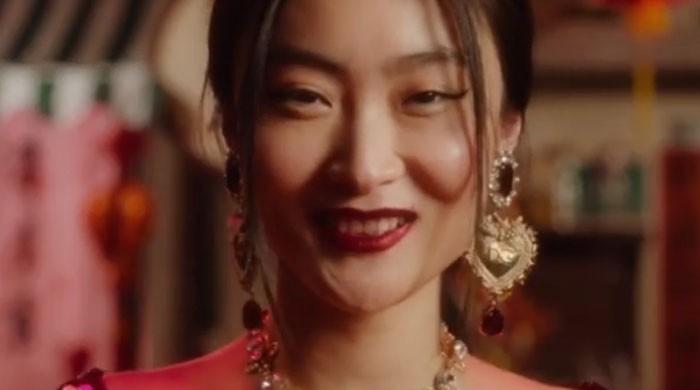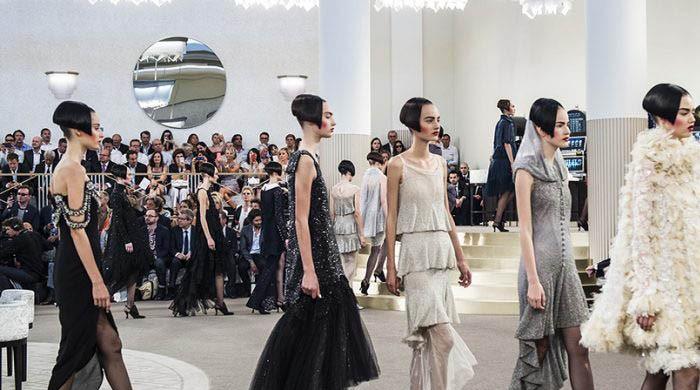Moscow: In her workshop in a attic in Moscow, Maria Andrianova uses a sewing technique that she has learned from older women in the forested Karelia region in the northwest of Russia.
“For me, sewing is a way to learn about my origin,” said the 31-year-old designer.
She describes her “Masha Andrianova” model line as “for the modern world”, but uses a number of sewing techniques that date from the tsarist era.
Her pouring dresses, blouses with high neck and pleated skirts are made of natural materials in pale or autumn colors.
“In Karelia the locals showed me a way to sew that I didn’t know. They had learned it from their mothers, it was like a family secret,” she said, braiding two threads together.
More and more young Russian fashion designers such as Andrianova are finding inspiration in traditional sewing methods that have fallen into disuse, and see them as a way to distinguish themselves from the Western brands that flowed into the country after the fall of the USSR.
“We no longer want to look at what the others in the West do,” she said.
“We want to find our own methods, because we also have many traditions and a very rich culture.”
Learning about such traditions can be a way for young Russians to explore further in the past of their country than the relatively well -known Bolshevik revolution, she said.
Andrianova has been inspired by sketches by an ancestor who owned a weaving factory, as well as the life story of her great -grandmother, who led a tailor company. She also learned techniques from her grandmother, who was born in the Soviet era.
“But I don’t recover clothing clothing,” she said. “I am making modern clothing in Russian history in them.”
At the age of 35, Yukhann Nikadimus decided to fully devote herself to making coconuthniki – traditional high headdresses of women who were especially popular in the 19th century.
Working in a factory that dates from the 16th century, but was renamed Bolshevik leader Vladimir Lenin in the Soviet era, the long bearded man carefully embroidery pearl patterns on canvas stretched on a wooden frame.
While he gets his ideas from the historical photos, he insists that his coconut can work in every contemporary wardrobe.
“For example, you could wear a coconut with a modern wedding dress,” he said.
“National clothing should not be something that has been resolved,” he holds full. “It always changes – new techniques appear, you have to take them up, it’s a natural process.”
For cultural commentator Ilya Oskolkov-Tensiper, founder of the Strelka Design Institute of Moscow, such a revival of interest in pre-revolutionary clothing among young designers was “almost inevitable”.
“During Perestroika (in the 1980s) and the next decades, Russians were fascinated by the West and everything that came from there,” he said.
“At the time we underestimate the value of what we had (in Russia) and we overestimate the beauty of everything outside.”
“Although we live in a time of introspection, we try to find out who we are, what our identity forms and what makes us unique.
“This is not just about fashion – it is much deeper. It is connected to design, music and film. It goes beyond politics.”
In the city of Ivanovo, the center of Russia for textile production, the 28-year-old Maxim Krylov wants to help young designers learn about their heritage.
He has established an annual festival called Textile Capital in The Town, 300 kilometers (186 miles) northeast of Moscow, aimed at encouraging designers to use traditional substances.
“This is our duty,” he said.
“We want to keep this heritage as an inspiration for Russian design, to show the globalized industry that we have our own world, a world that is Russian and local.”
In July, some designers worked with fabrics printed with Soviet propaganda designs in the archives of Ivanovo factories, said Krylov.
Wearing such clothing does not mean looking old -fashioned.
Vasilina Kharlamova, a 29-year-old from Moscow, says she loves clothing that “is linked to (Russian) culture” and has just ordered a dress from Maria Andrianova who intends to “wear with sneakers in daily life.”
However, such clothing is not to everyone taste, she admits.
“You have to learn to love this clothing and understand … the past.”






